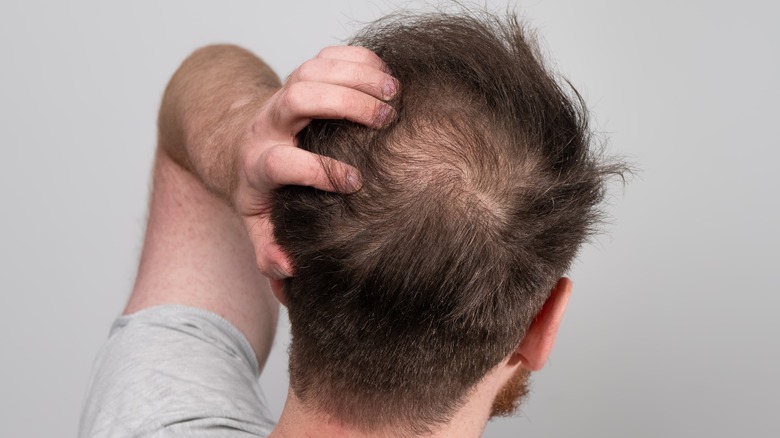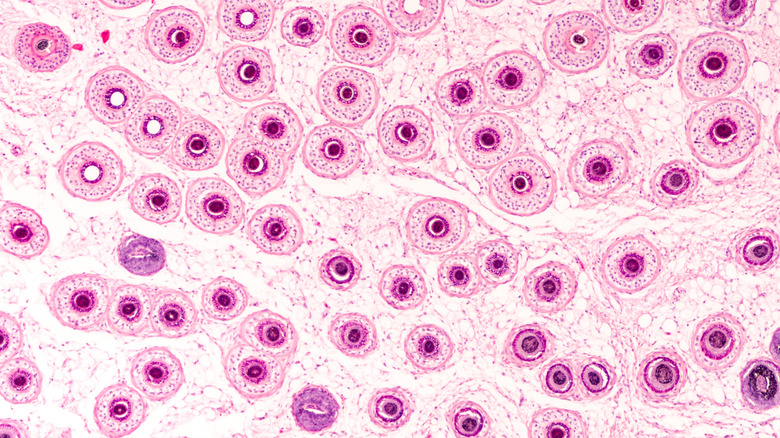What Causes Scalp Folliculitis?
Folliculitis is an inflammatory condition affecting hair follicles (via Healthline). According to the Cleveland Clinic, hair follicles are tuber-like structures that anchor the hair, and the human body has over 5 million follicles. When folliculitis takes place, it can happen anywhere on the body with hair, including the scalp. When it occurs on the scalp, it's known as scalp folliculitis. It may look like an acne breakout in the early stages but becomes inflamed with time, according to Healthline.
Inflammation can progress to inflamed nodules. Pus-filled cavities under the skin are called boils, per Johns Hopkins Medicine. Larger and more inflamed lumps called carbuncles can form when multiple boils merge. Other symptoms include itching, pain, or tenderness accompanied by sores with yellowish-brown scabs (via MedicalNewsToday). Knowing the causes of scalp folliculitis will help you better manage the condition if you have it. A visit to your dermatologist is also needed to ensure you receive an accurate diagnosis and the correct treatment for scalp folliculitis.
What causes scalp folliculitis?
A bacterial infection usually causes folliculitis. According to the Mayo Clinic, staphylococcus aureus is the most common hair follicle infection, but the condition can be triggered by certain viruses, fungi, and medications. You're also at risk of scalp folliculitis if you're fond of scratching your head, twist your hair while wearing hats or helmets, or use hair products that build up on your scalp over time, as explained by Healthline. The same applies if you frequently wear hairstyles that pull your hair, like tight ponytails.
According to Healthline, the condition isn't contagious. However, bacterial infection can spread to other follicles, causing permanent hair loss. The agents can also be transmitted to another person if you both share a razor (via MedicalNewsToday). Beyond the scalp, folliculitis can affect anyone, but as WebMD notes, certain risk factors increase your chances of getting it. You're more likely to develop the condition if you have damaged hair follicles, according to WebMD. Other risk factors include acne that's been treated with steroid creams or long-term antibiotics.
Scalp folliculitis treatment options
According to a 2022 study published in the journal StatPearls, staphylococcal infections that cause folliculitis may not always require treatment. Some cases with mild symptoms resolve on their own within a few weeks. You might also be able to manage the symptoms of scalp folliculitis at home if they're not severe, according to Healthline. Applying a warm compress or damp cloth to your scalp during the day can smoothen and drain any pus, helping to ease the pain and inflammation (via Healthline). If your symptoms are serious, it's best to seek advice from your doctor or dermatologist.
Considering the risk factors, limiting the frequency of head shaving, using clean razors, and washing your hair with an anti-dandruff shampoo are all effective measures to help prevent scalp folliculitis (via MedicalNewsToday). Your doctor might also prescribe an antibiotic ointment (to be applied to large nodules) and a topical steroid cream or antihistamine to help reduce inflammation.



